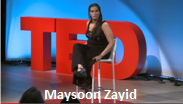When President Barack Obama took office in January 2009, the international community hoped he would have more success than his two predecessors in brokering a peace agreement between Israel and the Palestinians. Although peace in the Middle East is hardly the exclusive responsibility of the United States, it is a goal long sought by its political leaders and one inextricably linked to U.S. interests. As the Administration continues its quest for a Mideast peace agreement, U.S. policy-makers should ask how they can get both sides to think past the issues of the day and instead, begin focusing on the kind of strategic outcome they wish to achieve. This report takes an “end-around” approach to the problems of the Levant, imagining the goal – the establishment of a future Palestinian state – and asking what kind of security regime would be necessary to serve as midwife to such a state.
This research project examines three international peace operations in an effort to identify what lessons might be applied to a potential peace mission in the Middle East. It begins with case studies of East Timor, Kosovo and South Lebanon – all historically recent instances of international peace operations in highly complex environments. These case studies are followed by an essay on general military lessons learned from past peace operations and another on political lessons learned. Each chapter is preceded by a brief summary of how these past experiences might inform any future effort to provide the security necessary to implement a Middle East peace agreement and create a new Palestinian state. A concluding chapter examines likely future scenarios in Israel and the Palestinian territories that would make an international peace keeping force more or less likely and more or less successful.
No individual case study can replicate the challenges and environment of the Middle East – peace operations, like wars, are sui generis – but general lessons emerge from the international community’s experience with peacekeeping. At the very least, these papers will highlight these lessons. At best,though, thinking sooner rather than later about the mechanics of keeping peace between Israel and a Palestinian state might encourage leaders and publics on both sides and in the rest of the international community to embrace the idea that, despite all the frustrations of the past two decades in Israeli-Palestinian affairs, the two-state solution remains a viable and necessary option. Through a study of comparative models, this volume illustrates both the daunting challenges and potential promise of a peace operation in the Middle East.
To download the full report please click below:
| Attachment | Size |
|---|---|
| MEPP_Exum_March2010_code512_WEB_report.pdf | 1.97 MB |
Center for a New American Security - March 31, 2010 - Back to Resources Page
Did we miss something?
Click here to suggest a state building resource to be added to our fast-growing archive!
















